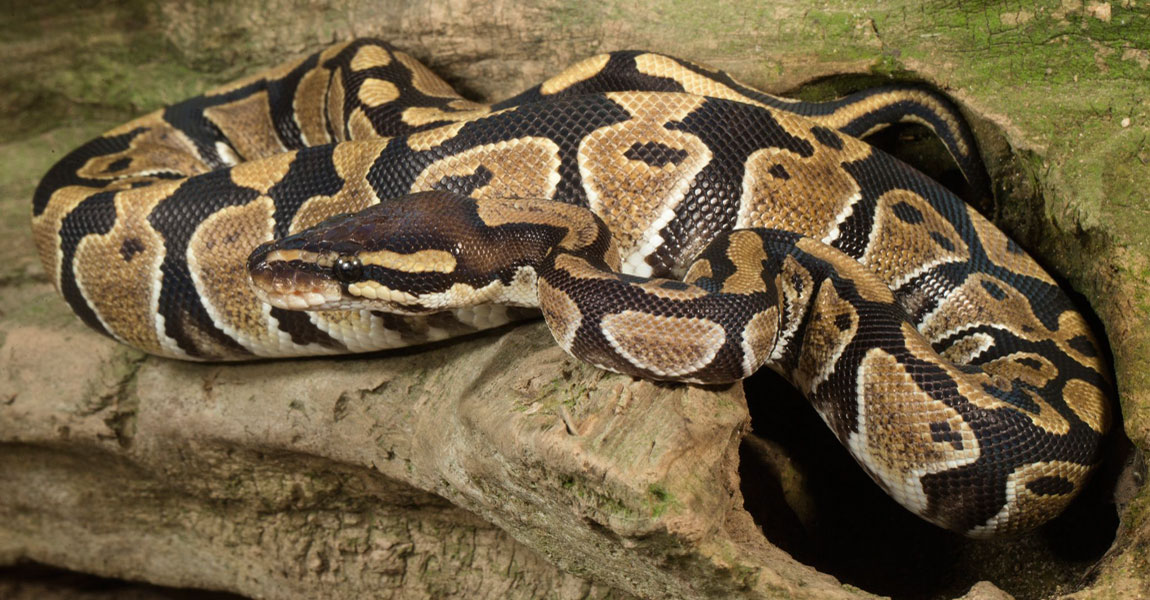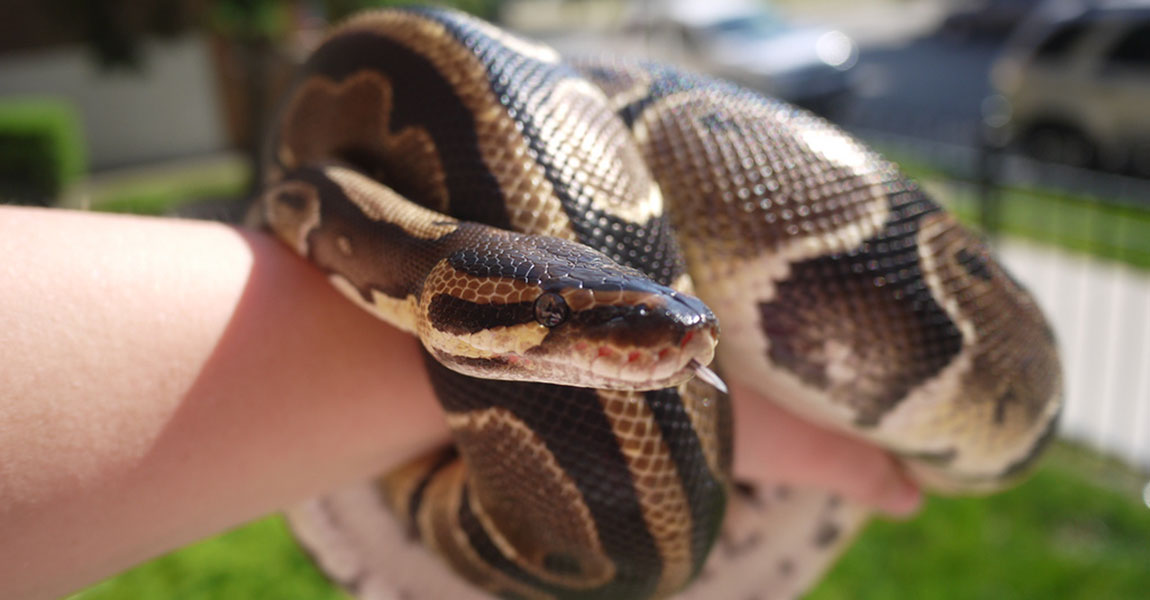Cages For Ball Pythons
Not all enclosures are made equally, and not all enclosures will fit the ball python’s needs.The first feature you need to get nailed down is the size of the tank.
Ball pythons shy reptiles and spend a lot of their time resting and hiding.
Unlike the bearded dragon or iguana, this means the ball python doesn’t need as much space for movement comparatively.
Despite the fact they can grow up to 5′ feet (1.52 m) long, they don’t need much space.
The common suggestion for cage size is 18″ inches (0.46 m) long, 36″ inches (0.91 m) wide, and 12″ inches (0.3 m) high.
It’s fine if the cage is a little larger or smaller than this, but don’t go too much bigger.
Ball pythons are happier in smaller spaces.
In the wild, they find hide places and prefer cramped areas.
It helps them stay safe from larger predators and gives their long, skinny bodies an edge-up against intruders coming into their space.
It also helps them retain heat better.
Material
The terrarium material is best made out of clear plastic or glass.This will allow you to see in and enjoy your pet while also keeping the heat and humidity up inside the snake’s tank.
Screens or mesh for the sides isn’t good at all.
While good air circulation will prevent respiratory issues from developing, the ball python has a more critical humidity need.
Mesh or screen sides make it difficult to keep the humidity up, which results in other, more severe and likely, health issues.
Some people get creative in making their ball python tanks.
This is fine as long as above needs are met.
Durability
When you buy a ball python enclosure, you don’t want to worry about it breaking or needing to replace it.A good terrarium will last the entire 30-year life span of the ball python.
But if you buy a product with poor durability, then you’ll need to replace it every few years.
Enclosure Design
The top design is important with ball pythons.While they aren’t exceptionally good climbers, they can still surprise you.
In a top, you’ll want either a solid piece top or one with a securing latch.
It’s also easy to install one yourself.
Many cages use a screen top too.
This is fine as long as you’re able to keep the humidity and temperature up to where it needs to be.
If you find it difficult to keep these specifications up, replace the screen top with a solid one.
For those worried about fresh air and circulation, consider adding a few live plants to the enclosure.
Live plants clean the air, keep it fresh and oxygenated, and help increase humidity too.
Accessories/Add-ons
While not essential, there are some accessories a tank may include, which makes your life a whole lot easier.Doors in front
Pre-installed light fixtures
Bottom tray for removing dirty substrate
Thermometer/Hygrometer included
Backgrounds
Different sizes
Ports for threading cords through
Places to attach lights and other needed tools
Keep these in mind if you’re unsure of which cage to get.
The most important factors are size, material, and top design.
Source: OddlyCutePets.com



